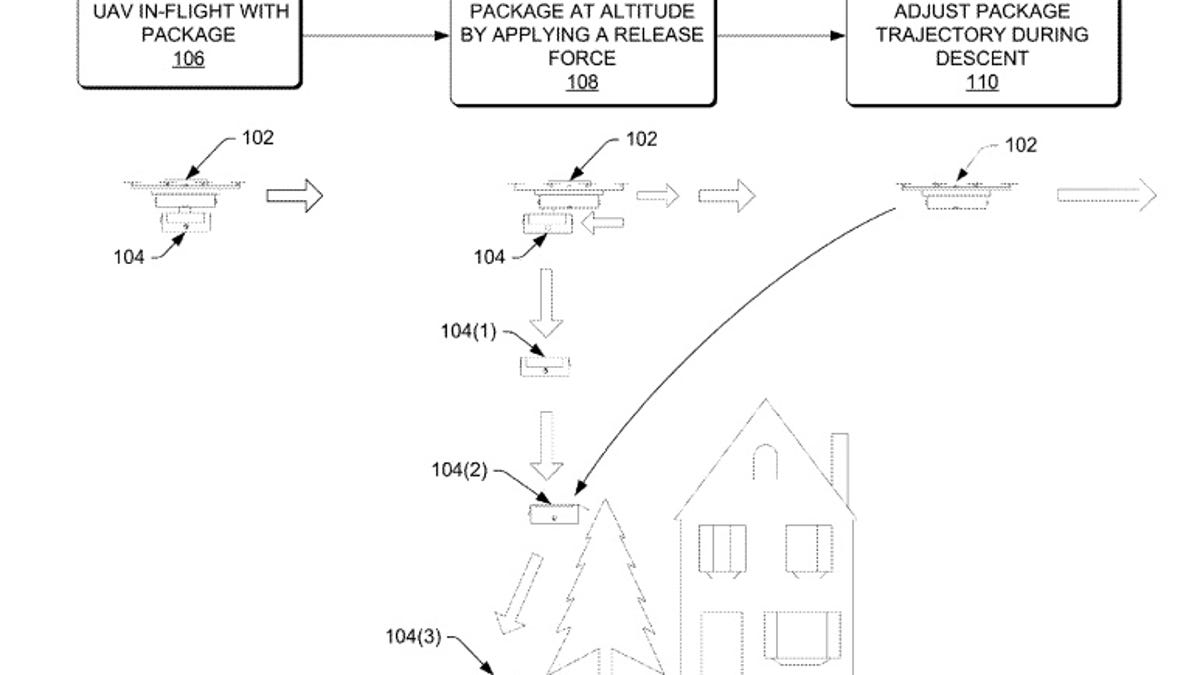Don't get too excited about Amazon's drone delivery patent
The tech titan has hatched a plan for dropping packages on target from a moving drone. But there are legal issues.
You might have heard: Amazon just won a patent that could let it drop packages from flying drones.
That's exciting, because so far drone deliveries have been pretty slow! This past December, Amazon's first drone deliveries, in England, required the drone to land before it could release a package, and France's postal service can't deliver mail by drone without landing at a specific "delivery terminal."
Even 7-Eleven, which has successfully "dropped" Slurpees in Reno, Nevada, does it with a box dangling from a long cable. The drone has to hover and stay still.
But Amazon's new patent, granted Tuesday by the US Patent and Trademark Office, describes a way to drop packages from a moving drone.
Normally, if you let go of a package from a moving vehicle, it won't drop straight down -- it'll curve, and possibly miss your target. Amazon's patent is a way to fire the packages backward so they cancel out the drone's movement. It also involves a secondary guidance system (think compressed air or steering fins) mounted on the package to guarantee it lands on target.
Amazon drone delivery patent #9567081 by CNET News on Scribd
Like with most patents, the specifics don't matter -- Amazon's lawyers wrote down as many possible ways of building such a thing (again, compressed air, steering fins) so Amazon has a better chance of defending the idea in court.
Ready for me to rain on the parade? The other thing about patents, particularly ones that have been granted, is that they describe old ideas -- ideas that may have been discarded.
Amazon applied for this particular patent in June 2015, and yet Amazon's first drone deliveries, in December 2016, didn't use such a system.
Of course, that could be because the laws haven't yet changed to make such a thing possible -- particularly in the US. Even with a drone license and a few waivers, you can't deliver a package in the States from an autonomous flying vehicle.
Or maybe Amazon hasn't figured out how to drop expensive china without breaking it.
Amazon didn't immediately reply to a request for comment.
(Via CNN Money.)


